Dunkirk’s Overlooked Tragedy: The Fate of the 51st Highland Division
The men of the 51st Highland Division, battle-hardened Scottish infantry, stayed on the beaches of France while others went to safety. We commemorate the miracle of Dunkirk; the men of the 51st were not part of that. While most of the BEF were ferried back across the Channel during the spring of 1940, the 51st was ordered to stay in France under French command, to hold a defensive line further south.
Their orders: to fight on at all costs. When the German advance began to close in on the coastal town of Saint-Valery-en-Caux, the men of the 51st were effectively trapped. Cut off from help, with no means of escape and no boats to come to their rescue, it was only a matter of time.
In this article, we will reveal the previously untold story of the heroic but doomed 51st Highland Division, and how they died a fighting death in what is being referred to by some historians as the “Forgotten Dunkirk”. In a desperate rearguard action against overwhelming odds, the men of the 51st held out as long as they could, in the faint hope that help would arrive. But in the end, the division’s inevitable resistance gave way to mass surrender, with over 10,000 prisoners captured by the Germans.
The Strategic Context
The deployment of the British Expeditionary Force (BEF) in northern France in May 1940 was a time of escalating crisis and repositioning. The BEF had been created as part of Britain’s strategy to aid France if Germany became aggressive. Stationed along the Belgian border, the British forces were part of a larger strategy that followed the Dyle Plan, anticipating that German troops would move through Belgium and northern France, similar to their movements during the First World War. This miscalculation became evident when the German Panzers cut through the Ardennes Forest, catching the French and British high command off guard.
The immediate impact was a fractured Allied line. The sudden German penetration at Sedan divided the British and French troops, with German armor racing towards the Channel ports in an attempt to encircle the main Allied armies in Belgium and northern France. While there were numerous attempts at counterattacks, the rapidly changing frontline required rapid reassessments of both deployment and strategic objectives from all sides.
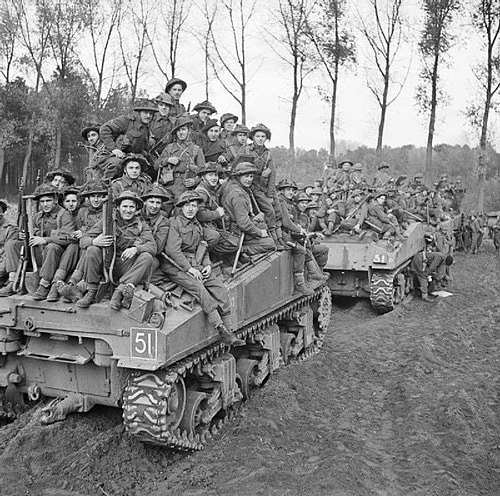
The 51st Highland Division was further south from the main body of the BEF at this time. The 51st had been retained for home defence until March 1940, when it was sent to France. The division, part of the IX Corps, was subsequently reassigned to the French Tenth Army in late May and placed under the command of French General Maxime Weygand. This decision had critical implications as the division was no longer under British operational control and their fate was now directly tied to French strategic decisions.
The 51st Highland Division was near the River Somme in support of French counter-attacks to form a new front line. Orders came to defend positions near Abbeville and Saint-Valery-en-Caux. The Division, part of the British 1st Corps and now under French operational command, found itself drawn into defending the positions.
Despite increasing German pressure, the 51st Highland Division was tasked with holding the line in support of the French counterattack. The area, though strategically significant, was far from the northern thrust of Allied operations and became increasingly vulnerable as the situation around it deteriorated. Despite a rapidly deteriorating situation, the division was ordered to maintain its positions and continue to support the French counteroffensive.
The German advance continued, and the Highlanders maintained their positions as long as possible. The commanding officer, Major General Victor Fortune, remained in close contact with the French command and worked to maintain the morale of his men. Cut off from relief and resupply as they were increasingly encircled, the men of the 51st held their positions, largely unaware of the larger strategic changes that had taken place, leaving them increasingly isolated. Cut off from reinforcement and with supplies running low, the men were forced to rely on their own strength.
The 51st Highland Division’s deployment under French command, far from the main concentrations of British forces, made their position untenable as German troops intensified their push across Northern France. Despite the deteriorating situation and their apparent vulnerability, the orders they received remained unchanged. This set the scene for what would become one of the war’s most poignant, yet underreported sacrifices.
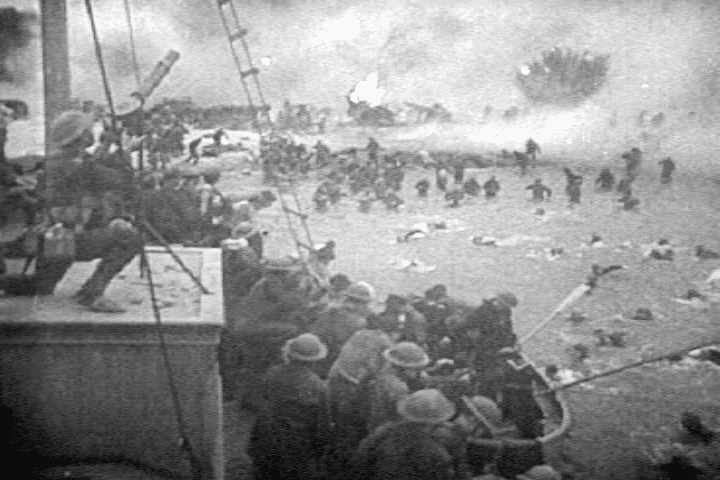
The Evacuation of Dunkirk
On May 26, 1940, the operation, code-named Dynamo, was set in motion, and by June 4, 1940, almost 338,000 troops had been successfully evacuated by sea from the beaches of Dunkirk to England, in one of the most dramatic rescue operations in military history. The Allied forces were, by this time, surrounded by the German army, which had outflanked and now ringed the British Expeditionary Force and its French allies. Winston Churchill would later refer to this event not as a victory but as a “miracle of deliverance.”
While thousands of men were saved, not all units of the British Army made it to the beaches. The 51st Highland Division is one of the best-known units that were left behind. The division was located much further south than the rest of the BEF at Dunkirk and was unaware of evacuation plans or the dire state of the BEF as they fought alongside their French allies at the Somme and Normandy.
The 51st were serving under French command within the French Tenth Army and had orders on May 30 to place the division under the command of French General Maxime Weygand. Although the combined command had many benefits, in this case, it seemed to limit the capability of officers on the ground to react as British commanders ordered their forces to concentrate on the evacuation taking place at Dunkirk. Politicians may also have misinterpreted the situation by instructing French commanders to remain in their positions.
British and French leaders were making decisions based on mixed signals and political pressures. In Britain, the priority became the evacuation of the BEF at Dunkirk, while the French continued to focus on counterattacks and holding their ground. The 51st Highland Division was left behind with no orders to evacuate, and no evacuation plan was drawn up for the 51st.
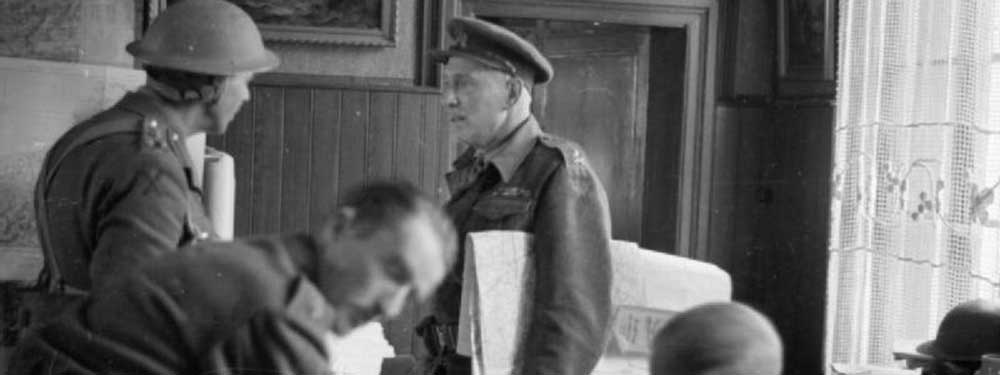
General Victor Fortune, commander of the 51st, is known to have made several requests for clarification or assistance during this time period. The German advance had been rapid, and communication with headquarters had become very difficult. By the time they were in a position to assist the 51st Highland Division, resources had already been committed to Operation Dynamo.
On June 4, 1940, as the British and French evacuation from Dunkirk was wrapping up, the 51st Highland Division was still locked in a struggle at Saint-Valery-en-Caux. The decision not to evacuate the 51st Highland Division appears to have been based on a combination of its location and the difficulty in effecting an evacuation due to the rapid German advance. The scale of the Dunkirk evacuation made the abandonment of the 51st Highland Division less visible to history. The tragedy of the decision is highlighted in the bravery and sacrifice of the men of the 51st.
The Battle for Saint-Valery-en-Caux
Days after the evacuation of Dunkirk, portions of the 51st Highland Division, alongside a French contingent, were stranded on the coast of Normandy around Saint-Valery-en-Caux, having been cut off from the rest of the BEF during its retreat. Rapidly advancing westward in early June 1940, the 7th Panzer Division, under Erwin Rommel, began to encircle the defenders. Caught in an ever-shrinking pocket without an opportunity to retreat further, they were effectively trapped.
The 51st Highland Division, commanded by Major-General Victor Fortune, alongside French forces led by General Marcel Ihler, rallied in and around the cliffs and valleys of Saint-Valery-en-Caux, determined to put up a fight. Low on supplies, air cover, and options, they were forced into close-quarters combat and rearguard actions to stall the German advance.

In the harbor, the Royal Navy waited for the chance to evacuate the stranded troops. But during the hours allocated to their rescue, thick fog engulfed the coast and German artillery pounded the town and harbor facilities. Hoping conditions would improve, their ships stayed at the ready in the port until the opportunity for a safe evacuation was lost.
Time was running out. Outnumbered and outgunned, with no prospect of resupply, the Allied forces at Saint-Valery fought on for several days. The surrounding beaches and local landscape provided some degree of natural fortification, but the pressure of the German infantry and armored divisions, closing in on all sides, made holding out a prolonged and increasingly untenable struggle. Connections to British high command were tenuous at best, and the brief window to break the siege was quickly coming to a close.
The final hours of the battle saw street-to-street fighting and desperate counterattacks by the defenders. Members of the 51st Highland Division, who were over a hundred miles south of the bulk of the BEF when ordered to retreat from Dunkirk in May 1940, were now firmly stuck in a battle that could no longer be considered strategically relevant. However, their resistance served a larger purpose, preserving allied forces that would prove crucial in the months ahead and standing as a symbol of British and French unity in one of their darkest hours.
On 12 June 1940, with all escape routes cut, and German troops now on the high ground, the vastly outnumbered and exhausted defenders of Saint-Valery-en-Caux were finally forced to surrender. In the wake of the larger Dunkirk evacuation, this engagement would be quickly forgotten. Still, the defence of Saint-Valery was one of the most heroic and underappreciated chapters of Britain’s war.
Captivity of The 51st Highland Division and Aftermath
When the 51st Highland Division surrendered at Saint-Valery-en-Caux on June 12, 1940, over 10,000 British soldiers were taken prisoner by the Germans. The mass capitulation, one of the largest suffered by British forces in the early stages of the war, marked a somber conclusion to their valiant stand. Major-General Victor Fortune, who had refused to abandon his French allies, surrendered alongside his men. This act of solidarity, though noble, sealed their fate.
The journey into captivity began with forced marches across northern France and into Germany. Exhausted from battle and short on rations, many Highlanders were subjected to grueling treks toward POW camps. In letters and diaries, some prisoners recalled marching for weeks with little food or water, under constant guard. Their eventual destinations included camps like Stalag XX-A and Stalag VIII-B, where conditions ranged from harsh to brutal.
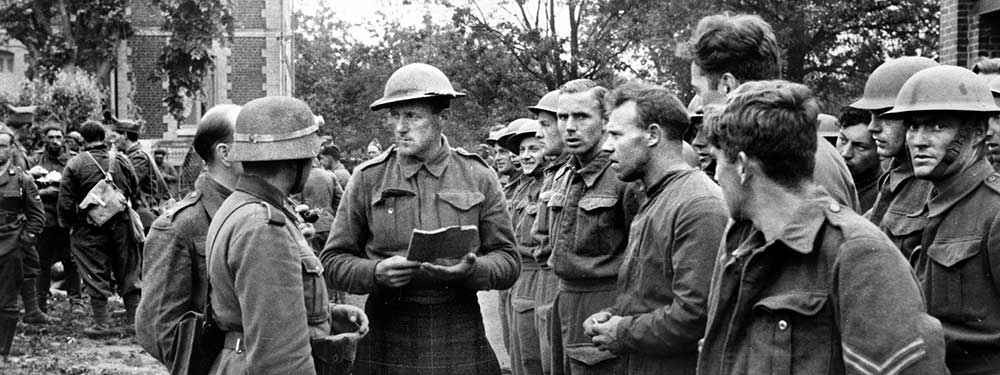
Life in the camps was marked by monotony, hardship, and uncertainty. Many prisoners were forced into labor, working in farms, mines, or factories under German oversight. While the Geneva Convention provided some theoretical protections, enforcement varied. Red Cross parcels and rare letters from home were lifelines for morale. Still, for many, captivity would last nearly five years, with little hope of early release.
The psychological impact on those held prisoner was profound. Separation from families, poor conditions, and the loss of comrades took a toll that lasted long after liberation. Meanwhile, back in Scotland and across the UK, families endured months—or even years—without news of their loved ones. Wartime censorship and the chaos of the campaign meant many soldiers were initially listed as missing, not captured.
The fate of the 51st Highland Division resonated deeply across Scotland, where the unit had strong regional ties. Communities mourned not only the loss of so many men to captivity but also the strategic and symbolic blow it represented. In the decades following the war, veterans’ organizations worked to preserve the memory of their ordeal, ensuring their story would not be overshadowed by the triumph of Dunkirk.
Although the division would later be reconstituted and return to battle in North Africa and Europe, the scars of Saint-Valery remained. The “Forgotten Dunkirk” became a term not just for a neglected military event but for a chapter of profound sacrifice that shaped the national memory of the war in Scotland. The legacy of the men who endured captivity stands as a testament to their resilience and loyalty.
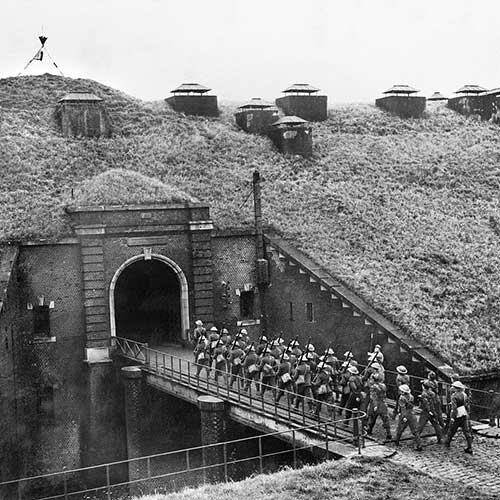
The “Forgotten Dunkirk”
The 51st Highland Division capitulated at Saint-Valery-en-Caux on 12 June 1940, resulting in more than 10,000 British troops being captured by the Germans. The division’s surrender was one of the largest British capitulations of the early stages of the war and was a grim conclusion to a heroic stand by British troops. Major-General Victor Fortune had chosen not to leave his French allies and surrendered with his men.
The experience of being held as a prisoner of war in 1940 was a long and arduous process. Prisoners were marched across northern France and into Germany. Many of the exhausted and half-starved Highlanders were forced to make the long trek to POW camps on foot, dragging their belongings with them. Prisoners recalled marching for weeks on end without much food or water, under heavy guard. Stalag XX-A, Stalag VIII-B, and several other camps were the final destination for many captured British soldiers.
Life in a POW camp was very different for many of those taken captive by the Germans in 1940. While some prisoners were able to live in relative comfort, this was the exception rather than the rule. Many of those captured had to work as forced labour, on farms, in mines, or in factories, under the direction of the Germans. The Geneva Convention outlined some rights for POWs, but it was not always enforced. Red Cross parcels and the occasional letter from home were crucial for morale, but captivity was prolonged for many. Most of those captured would be held for close to five years before being repatriated.
The impact of time spent in captivity varied between individuals, but the effect it had on most prisoners was huge. Separated from their families, poor living conditions, and the loss of comrades had an impact on most, which they carried with them long after the war. In Scotland and the rest of the United Kingdom, families of the captured were often left with months or years without news of their missing family members. During the campaign, many soldiers were classified as missing, rather than captured, so when families first heard of their loved ones, it was often bad news.
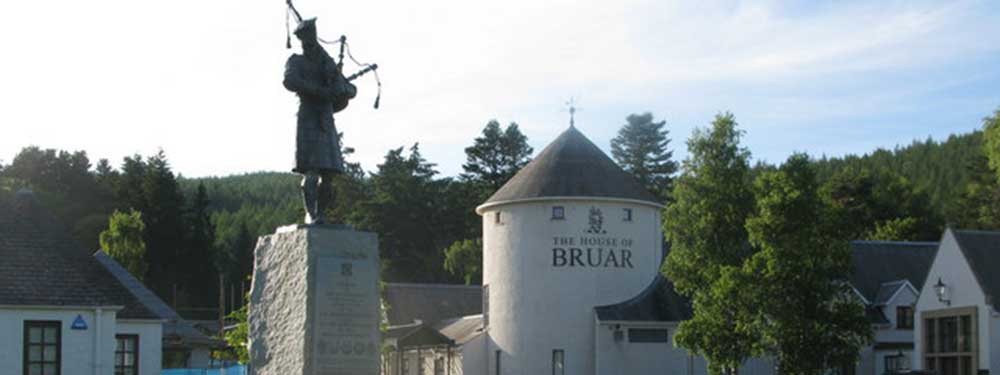
The 51st Highland Division’s fate was followed closely in Scotland, as the division had significant links to communities across the country. Their loss was felt keenly not just by those who had served in the division and their families, but also as a strategic and symbolic loss by the country as a whole. In the years following the war, veterans’ groups lobbied to keep the story of the “Forgotten Dunkirk” alive, rather than have it overshadowed by the victory of Dunkirk.
The division was reformed and saw action again in North Africa and mainland Europe, but the memory of Saint-Valery remained with them. The “Forgotten Dunkirk” became a shorthand not just for a forgotten military event but for a chapter of great sacrifice that remains a significant part of the national memory of the war in Scotland.
Honoring a Sacrifice Without Rescue
It’s a tragic but important part of history – for every Dunkirk there is a “Forgotten Dunkirk”. British soldiers fought courageously on the beaches of Dunkirk, and while their plucky escape was rightfully glorified in the decades since the war, not every story had a Hollywood ending. For the men of the 51st Highland Division, stranded without support, outnumbered and outgunned, the call was made to surrender.
Their bravery during the days of fighting at Saint-Valery-en-Caux cannot be understated; while their retreat options were becoming more and more remote in the days leading up to their evacuation, the actions of the men in the 51st were no less valiant than their counterparts in Dunkirk. As one of the few survivors of the operation would later say, “We didn’t run away. We were just abandoned there.”
In recent years, there has been an effort to raise awareness about the sacrifices of the division, with a memorial built in Saint-Valery-en-Caux and local groups in Scotland setting up meetings and historical societies to share firsthand accounts. The Royal Regiment of Scotland has also been active in keeping the events of June 1940 alive and well-known.
To understand World War II as a whole, stories like these must not be overlooked or forgotten. By better understanding all aspects of history, we can work to avoid making the same mistakes. To recognize the fate of the 51st Highland Division is not only to memorialize the sacrifices of these men but to set the record straight on a narrative that the victors long ago shaped. It is time we give this story the permanent place in history that it so rightfully deserves – and etch it into our memory, not just our memorials.







